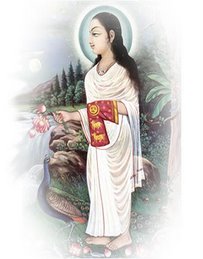Any knowledge of even the existence of an object takes place in our minds. The mind becomes conscious of the various ‘objects’ by the various ‘faculties’ available to it. The very fact the mind has various faculties at its disposal shows that knowledge of different objects call for taking resort of different means. It is extremely important that we take resort to the right means; otherwise even the existence of that object will not be evident to us. These ‘means of knowledge’ are called Pramana.
Pramana give rise to valid knowledge of things "as they are in fact". Validity is generally defined in terms of correspondence with objective reality. Thus 'Pramana' means 'yathartham'; or what comprehends a thing as it is. Knowledge carries its own proof.
To get the knowledge the best way is Pramana (Epistemology).
Pramana ------> Pramaye ------> Sadhan ------> Phala
(Knowledge)-(Means of Knowledge)-(Object of Knowledge)-(Validity of Knowledge)
Source of knowledge is Pramana. Pramana in Sanskrit means the source of knowledge- "from which one gets to know". Prameya means the object known through the Pramana. "Pramana" is the one who gets to know.
The aim of Suddhadvaita philosophy is the knowledge of Brahman. For attaining Brahman, knowledge of Brahman’s nature is absolutely necessary. This system lays particular emphasis on the love type of devotion as a means for the attainment of Brahman. It, however, does not ignore importance of knowledge. It believes that that devotion must be preceded by knowledge so that one should understand the nature of Brahman, to whom devotion is to be directed. The problem of knowledge is in the forefront in all the systems of philosophy – Occidental as well as Oriental. All the systems have discussed how to get the right type of knowledge and by what proofs it is to be arrived at. Each system has its own view about the validity of knowledge.
1) Chaarvaak, who was a materialist, trusted only in the perception for the validity of knowledge, pertaining to the worldly matters. He did not believe in the existence of God.
2) The Buddhist school known as the ‘Swatantra Vigyaanvaadis’ accept perception, inference and verbal testimony as Pramanas, but it is opposed to the idea of God.
3) Jainism supports the theory of perceptual knowledge, assisted by conception or thought, which is both perceptual and inferential knowledge. To this is added ‘Shruti’ or knowledge from authority. It admits two kinds of knowledge – mediate and immediate knowledge which is got through clairvoyance, telepathy, and omniscience. The omniscience knowledge is unlimited and absolute, transcending space, and time and is to be achieved by the liberated souls. This knowledge can be obtained in two ways by Pramanas in which knowledge of a thing is got as it is and by the Nyaya way in which knowledge is obtained in relation to another thing. This knowledge is not invalid. It is valid relatively only.
4) The Nyaya – Vaisheshika schools accept four proofs namely, Perception (Pratyaksh), Inference (Anuman), Verbal Testimony (Sabdha) and Analogy (Upamana).
5) The Mimansakas add to these, implication and negation. By verbal testimony, the Mimansakas mean the Vedas exclusive of the Upanishads as proof.
6) The Vedantees such as Shri Shankaracharya rely upon Shruti, Reason (Discursive Intellect) and intuition. In case of conflicts among the Shruti’s, reason or intuition must be relied upon. Shri Ramanujacharya accepts perception, inference, and verbal testimony.
7) Shri Vallabhacharyaji accepts the necessity of right knowledge for comprehending the nature of the reality of Brahman. He, however, rejects all other proofs, except the Verbal Testimony, by which he means the scriptures viz the entire Vedas, the Geeta, the Brahma sutras and Shrimad Bhagavat.

Pustimarg-The Path Of Grace a Religious Blog is licensed under Creative Commons Attribution-Noncommercial-No Derivative Works 2.5 India License.
16 July 2007
Subscribe to:
Post Comments (Atom)


.jpg)
No comments:
Post a Comment